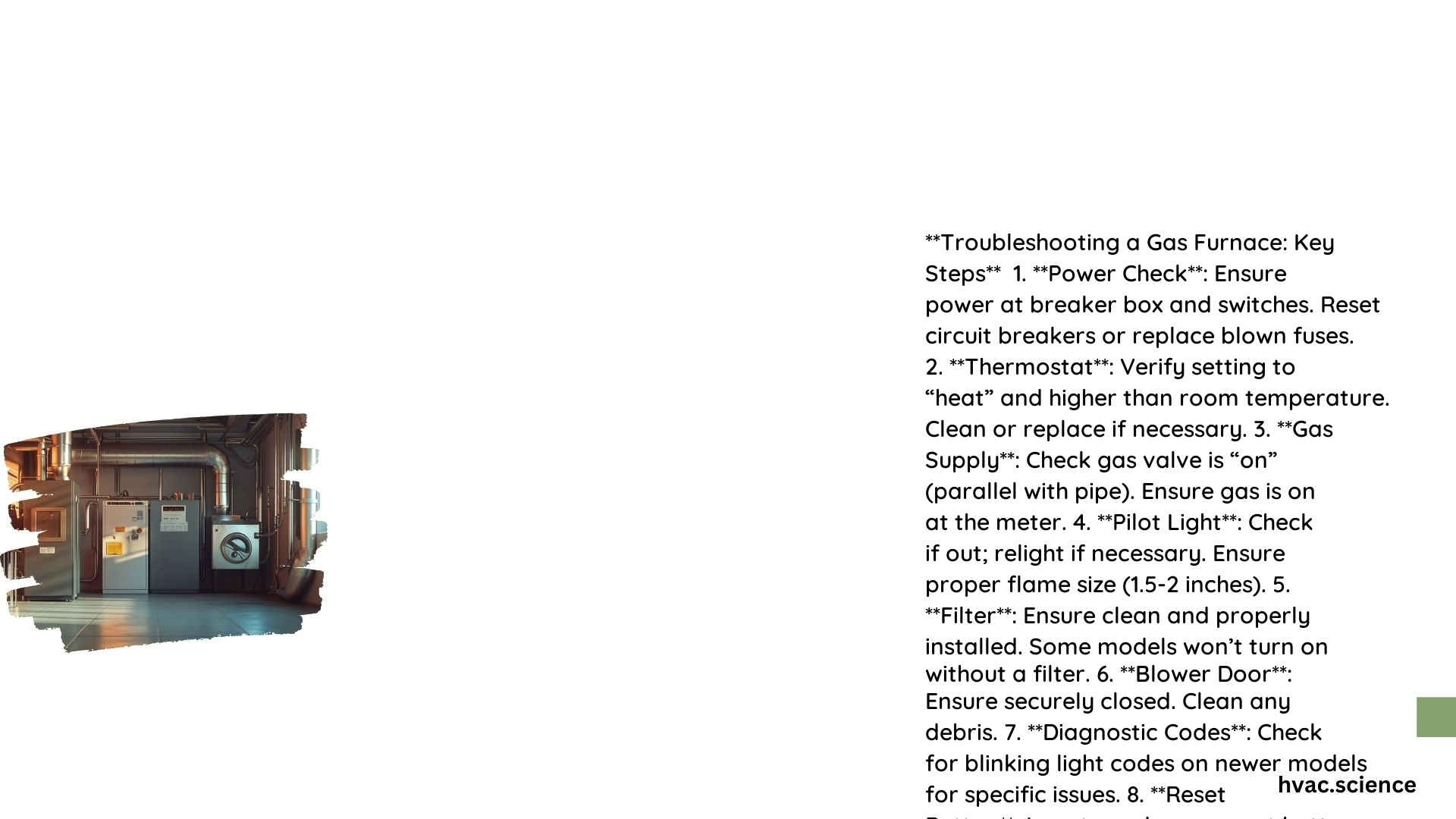Troubleshooting a Gas Furnace
When your gas furnace stops working, it can be a frustrating and concerning experience, especially during the colder months. However, with a systematic approach and some basic troubleshooting steps, you can often identify and resolve the issue without the need for a professional HVAC technician. In this comprehensive guide, we’ll walk you through the process of troubleshooting a gas furnace, from basic checks to more advanced diagnostics.
What Are the Basic Checks to Perform?
Before diving into detailed troubleshooting, it’s essential to perform these basic checks:
-
Is the Air Filter Clean? A clogged air filter can restrict airflow and prevent the furnace from functioning properly. Ensure the filter is clean and replace it if necessary.
-
Are the Thermostat Settings Correct? Verify that the thermostat is set to “Heat” mode and the desired temperature is higher than the current room temperature. Also, ensure the fan switch is set to “AUTO” to avoid continuous cold air circulation.
-
Is the Power Supply Working? Check the power disconnect switch near the furnace and ensure it is in the “On” position. Verify that the breaker or fuse for the furnace has not tripped or blown.
-
Is the Gas Supply Turned On? Ensure the gas valve to the furnace is open. For propane or oil furnaces, check the fuel levels and ensure there are no interruptions in service.
How to Troubleshoot the Pilot Light and Ignition System?
-
Pilot Light Issues: If your furnace has a pilot light, check if it is lit. If not, follow the manufacturer’s instructions to relight it.
-
Electronic Ignition Problems: For furnaces with electronic ignitions, check if the ignitor/sensor is dirty and clean it if necessary. If the ignitor or sensor is faulty, it may need to be replaced by a professional.
What Should I Check with the Thermostat?
-
Thermostat Settings: Ensure the thermostat is set correctly (Heat mode, temperature higher than room temperature, and fan set to AUTO).
-
Thermostat Batteries: If your thermostat uses batteries, replace them if they are old or weak.
-
Thermostat Wiring: Verify that the thermostat wiring is intact and not damaged. Use a wiring diagram to ensure all connections are correct.
What Electrical Checks Should I Perform?
-
Power at the Furnace: Use a multimeter to check for voltage at the furnace. Ensure there is power at the electrical panel and that the breaker or fuse has not tripped.
-
Fusible Disconnects: Check the resistance across each fuse to ensure they are not blown. Replace any blown fuses with identical ones.
-
Control Board: Check the control board for any error codes or indicators. Consult the user manual for specific error codes and their meanings.
What Are Some Advanced Troubleshooting Steps?
-
Heat Exchanger and Blower Motor: Inspect the heat exchanger for any cracks, which can cause carbon monoxide leaks and prevent the furnace from heating. Ensure the blower motor is functioning correctly. If it is not turning on, check the capacitor and replace it if necessary.
-
Ductwork and Vents: Ensure all vents and registers are open and unobstructed. Blocked vents can prevent proper airflow and heating.
What Safety Precautions Should I Take?
- Always turn off the power to the furnace before performing any internal checks or repairs.
- Ensure your hands and feet are dry before handling electrical components.
- If you smell gas, evacuate the household immediately and contact your gas supplier and a local HVAC contractor.
What Tools Are Needed for Troubleshooting?
- Multimeter for voltage checks
- Screwdriver for accessing internal components
- Medium grain sandpaper for cleaning the ignitor/sensor
- Wiring diagram for the thermostat and furnace
Common Electrical Problems and Troubleshooting
- No Power to the Furnace:
- Check the breaker or fuse box to ensure the breaker has not tripped or a fuse has not blown.
-
Verify the power disconnect switch near the furnace is in the “On” position.
-
Faulty Thermostat Wiring:
-
Use a multimeter to check for continuity in the thermostat wiring. Consult the wiring diagram to ensure all connections are correct.
- Check the control board for any error codes or indicators. Consult the user manual for specific error codes and their meanings.
- Ensure the LED light on the control board is lit, indicating power to the board.
By following these step-by-step troubleshooting guidelines, you can often identify and resolve common gas furnace issues without the need for a professional HVAC technician. However, if you are unsure or feel uncomfortable performing any of these checks, it’s always best to contact a qualified service provider for assistance.

